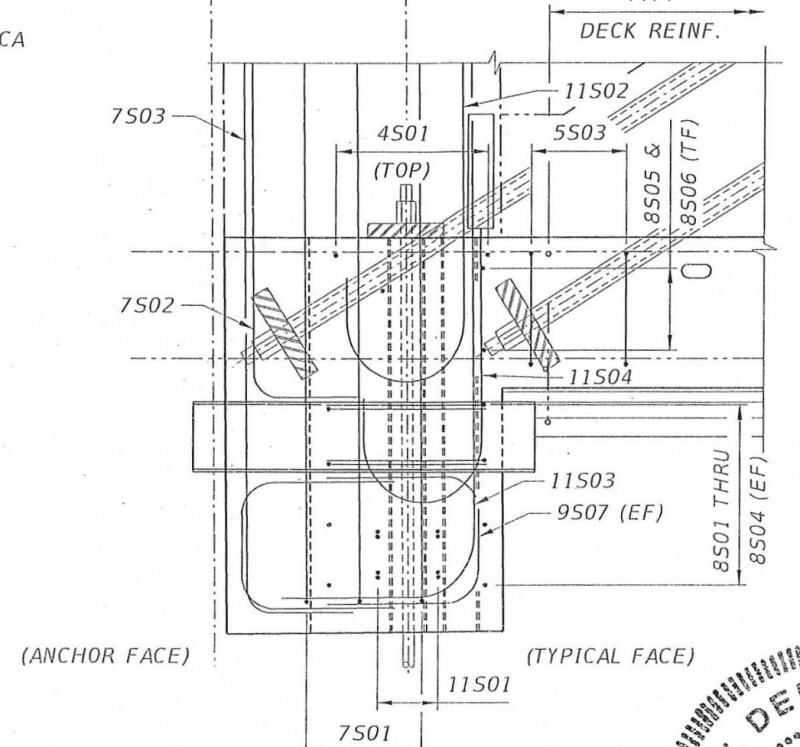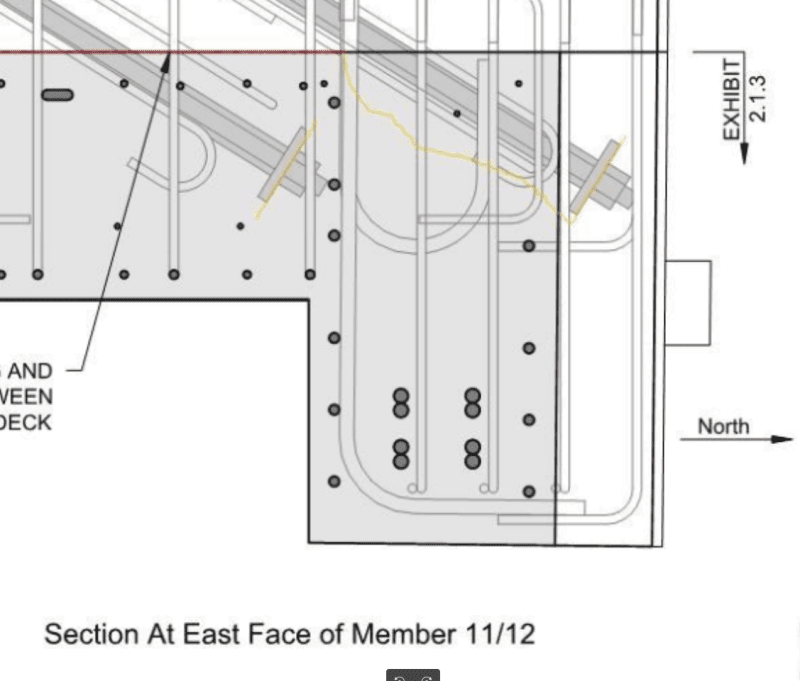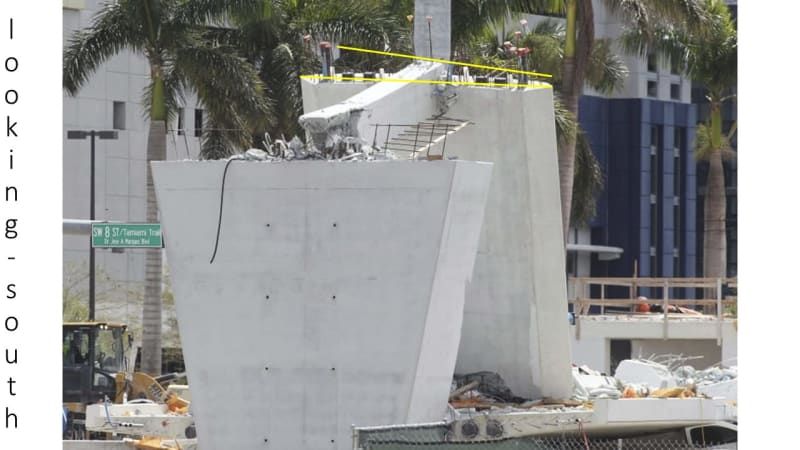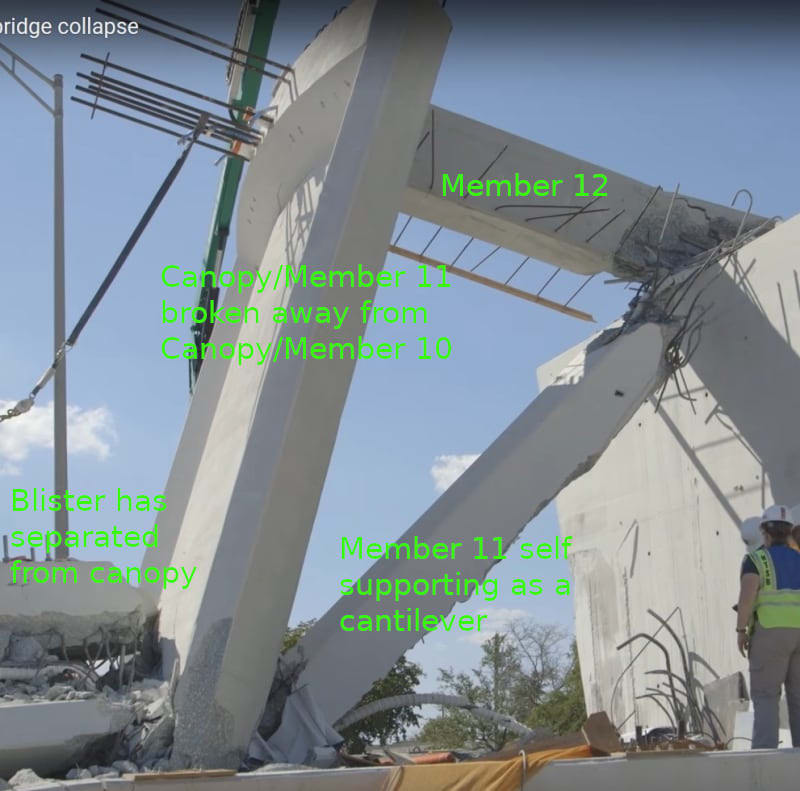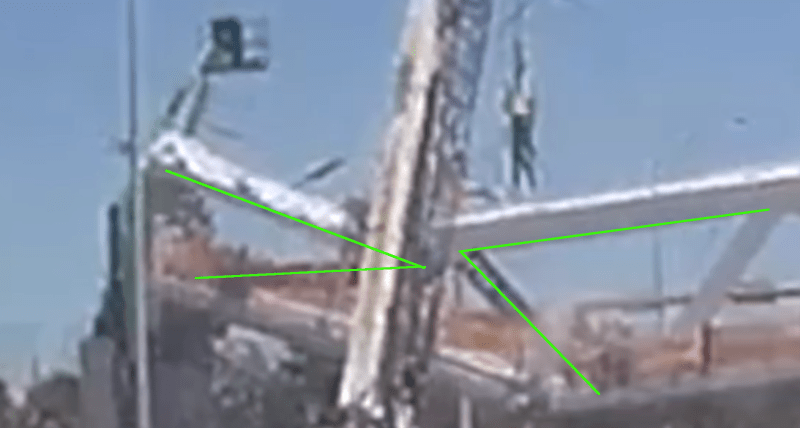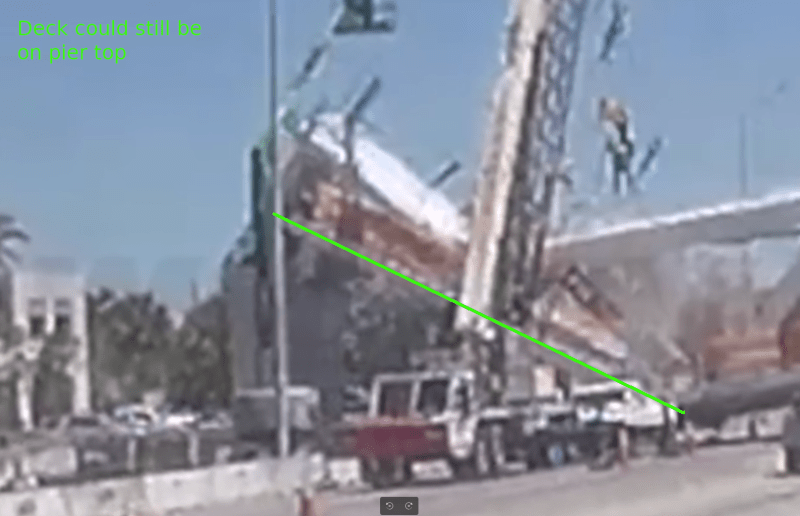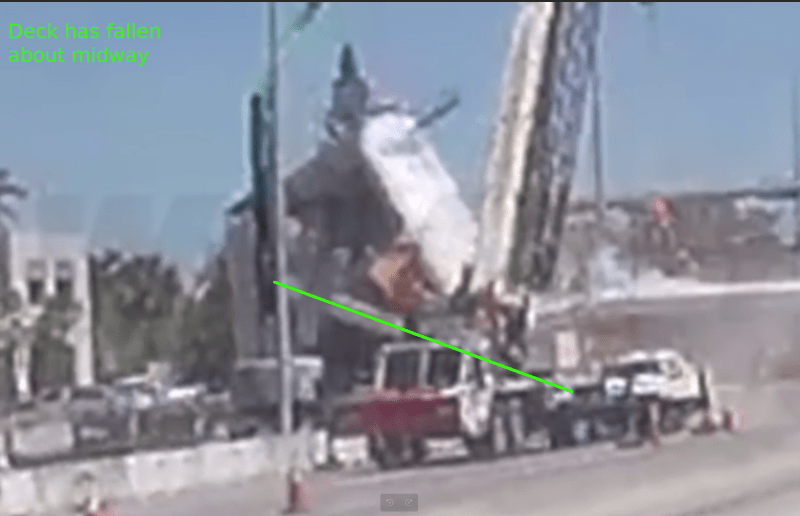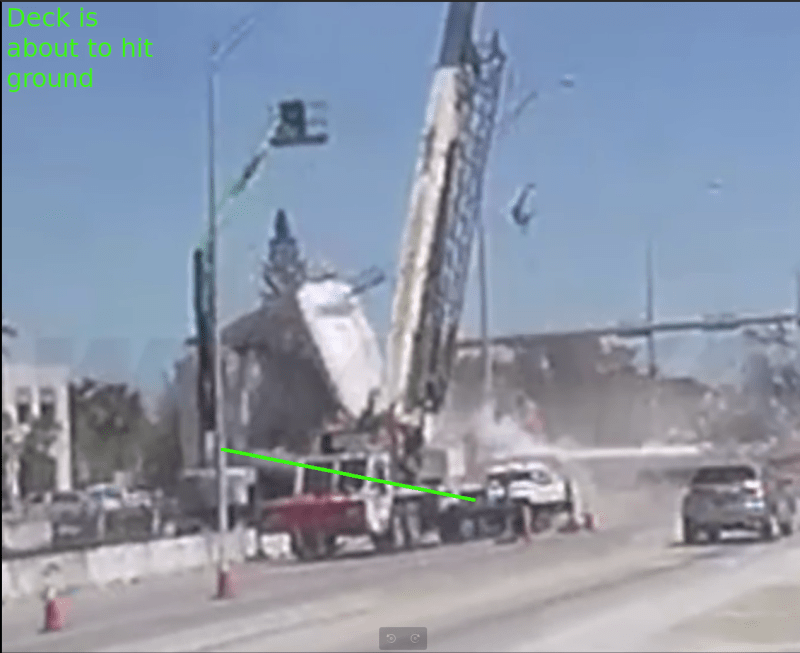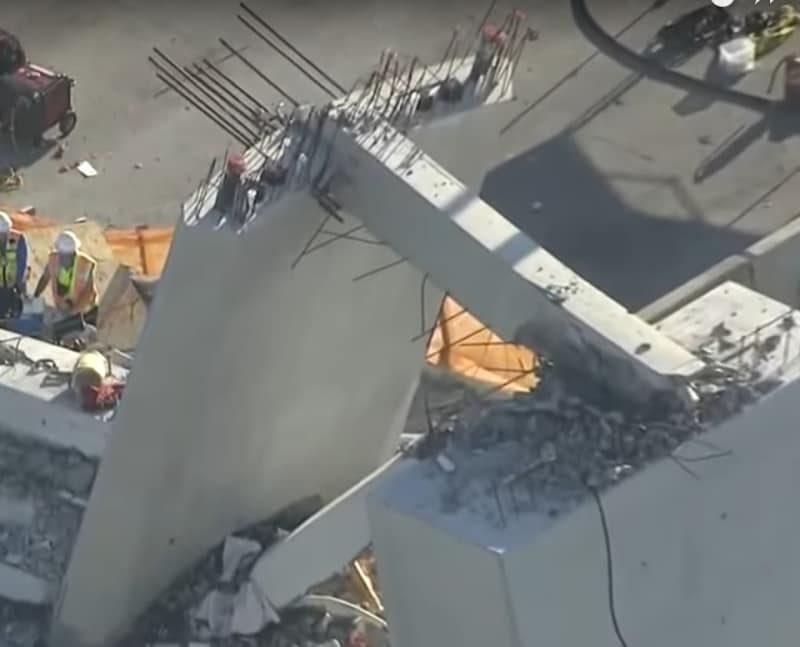waross (Electrical) said:
If the canopy first broke at the north end of the blister it is likely that the upper end of member 11 also broke.
You are flogging a dead horse now.
Upper end of member 11 may have been damaged but did not break. The photo below shows upper end of member 11 was able to act as a fixed support of a cantileve after the collapse. The free end of the cantilever (member 11) has rebar resting on on the pier but they were not bent suggesting member 11 was able not to relying the pier as a support. You can search videos of NTSB engineers milling around underneath member 11 never feeling any safety issue.
Any engineer with the basic understanding of statics can tell us that if the member 11 were unable to hold its position at the bottom with the deck but move to the north then the whole bridge will collapse.
Equally if the upper end of member 11 move vertically above the canopy the bridge will also drop.
The evidence in the field is member 11's upper end has not moved upward but was still solidly connected to the canopy as shown from the above photo. In the collapsed bridge the canopy folded or hinged at the point member 11 meets member 10. The blister simply came off from the canopy with possibly some rebar attached.
The important feature of the bridge is member 11 is a strut. As long as member 11 does not crush or buckle in compression and the two ends are structurally connected it will be able to "prop" up the bridge.
All the evidence in the field and the official reports from MCM, FIGG, OSHA and NTSB indicate the bridge failed because of 11/12/deck connection.
Yet the discussions that something fishy happening at the canopy joint amount to nothing but video footages confirming the canopy hinge deflection being more pronounced than that of the hinge at the deck. This has been pointed out that top of member 11 might have separated from member 10 at the canopy during the fall. I post a similar shot taken by another vehicle (I believe) showing the separation.
All post-collapse photos show the canopy has been broken up at this location. Only the breakage took place during the collapse could explain why Member 11 was able to attached to the canopy and ended up as cantilever on the ground.
Vance Wiley (Structural) said:
The canopy looks to be folded about at the left side of the white crane boom. Node 9/10 has about hit the roadway. Is the deck still on top of pylon?

